Blog
Do Visitors See Your Most Important Page Elements?
Scenario: You are frustrated by the performance of your paid search landing page, so decide to rebuild it from scratch.
The new page is run as an A/B test and fails.
The instinct is to scrap the page entirely, revert to the old page, and forget the entire episode.
But how do we know the experiment was a total bust?
We don’t because we are only looking at the final outcome.
What if the culprit was one page section? This is confirmed by the fact that visitors who didn’t interact with this section converted at a high rate.
The fact is, we can’t evaluate the output without understanding the user behavior of our core page elements.
And to understand those core page elements, one needs to track them.
But don’t track everything. Not everything matters. The trick is identifying page elements YOU believe are essential in getting someone from being interested to placing their order.
My advice is to track no more than three core page elements.
Let’s understand this using a non-client example. To see client examples, check out our 26 case studies.
Content Discovery Example
Say you sell a chef’s knife and drive your paid traffic to this product page: https://misen.com/products/chefs-knife.
You conclude that your core page elements are:
1: This knife-cutting gif, which does a good job showing knife effectiveness:

2: This 3 Reasons to NOT Buy section:
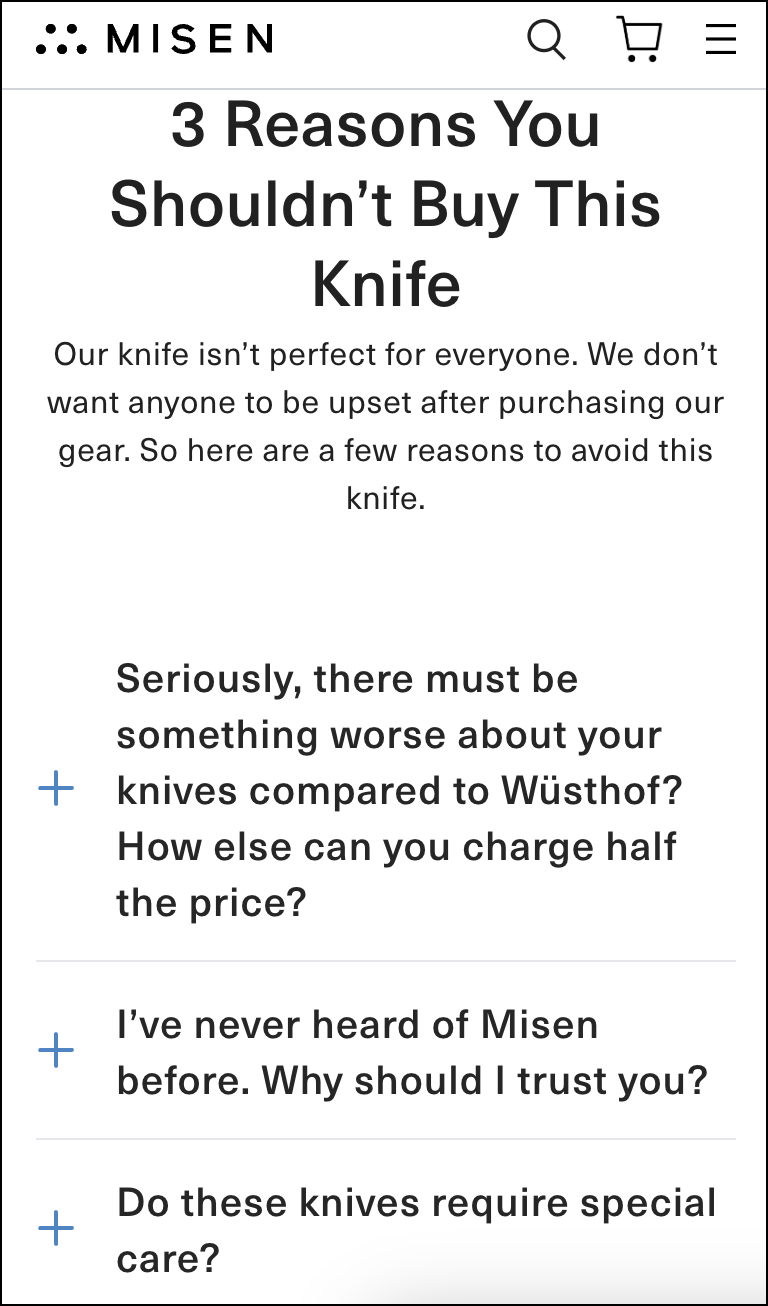
3: And finally, this customer photos section, which acts as social proof:
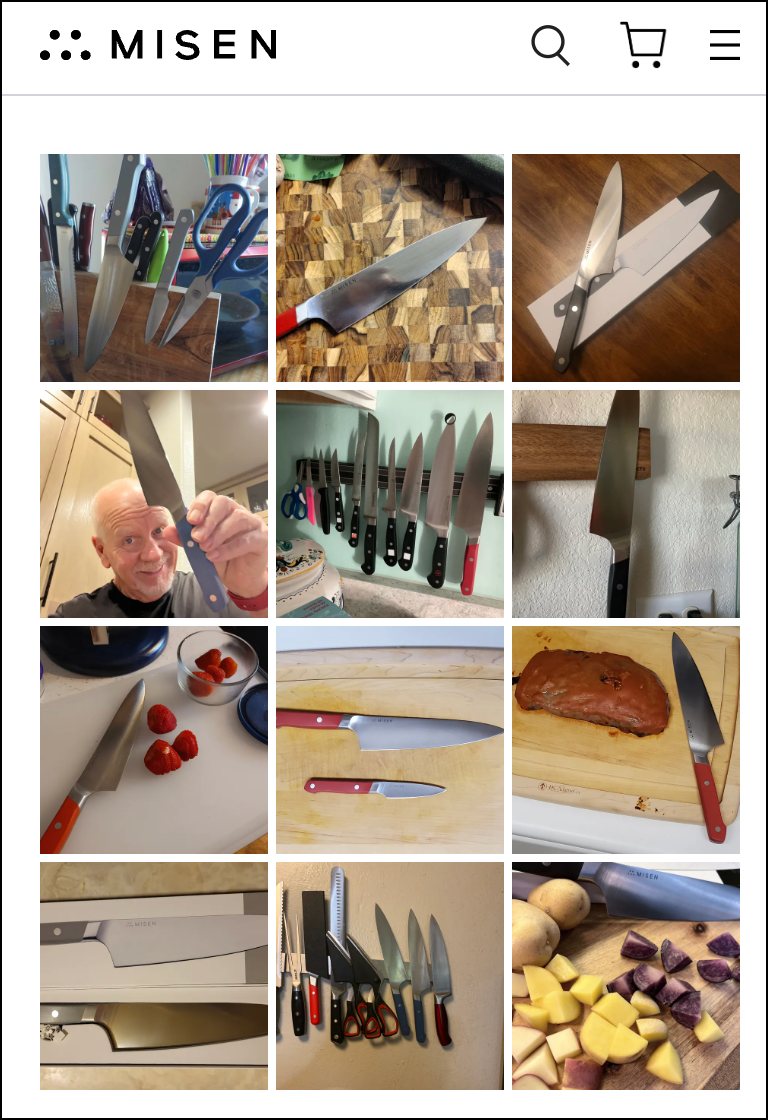
Now that these 3 sections have been identified, we need to add tracking to know if visitors interact with them.
1: For the animated gif, you would need to use Google Tag Manager to fire an event when the shopper slows down when the gif becomes visible in their screen’s viewport:
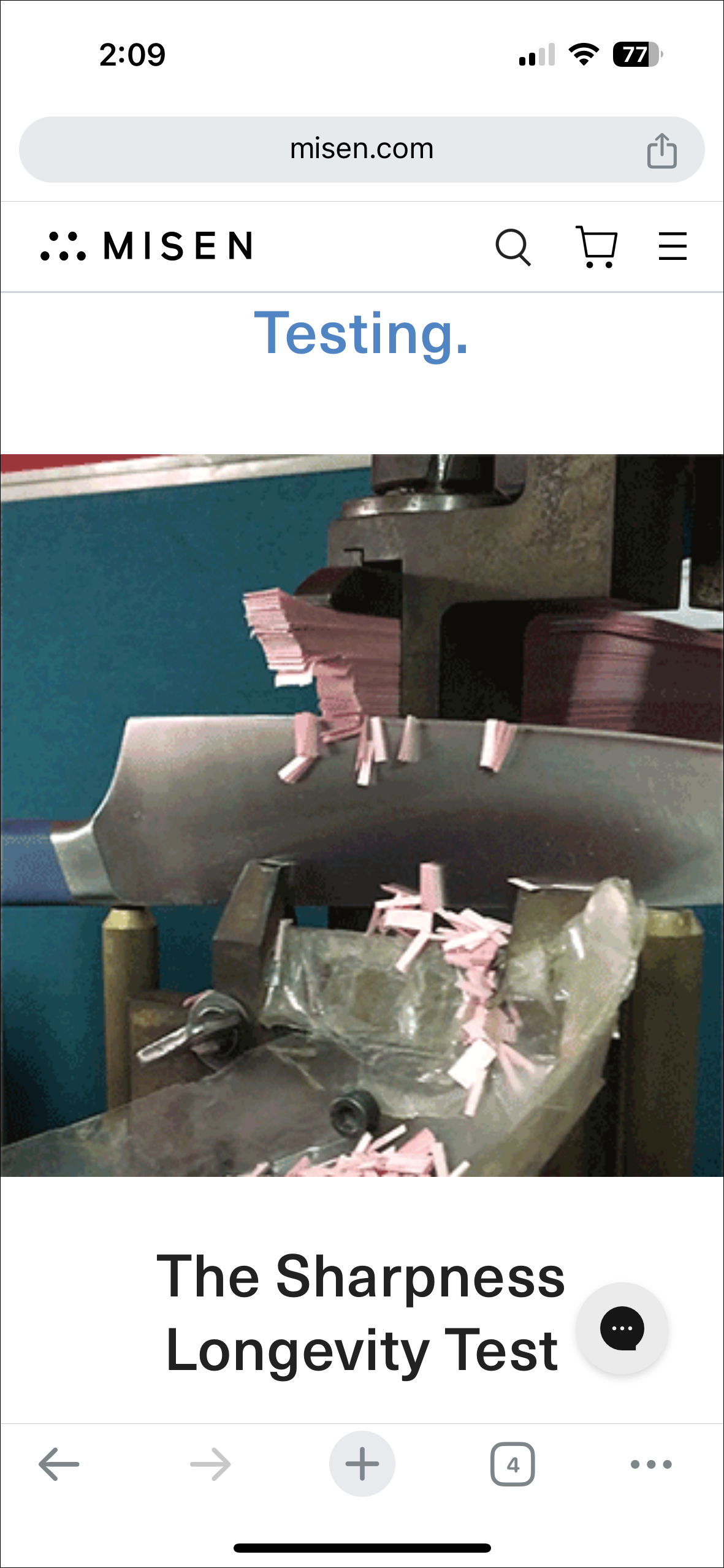
2: For the 3 Reasons to NOT Buy content, you could fire an event when the content expansion section is clicked:
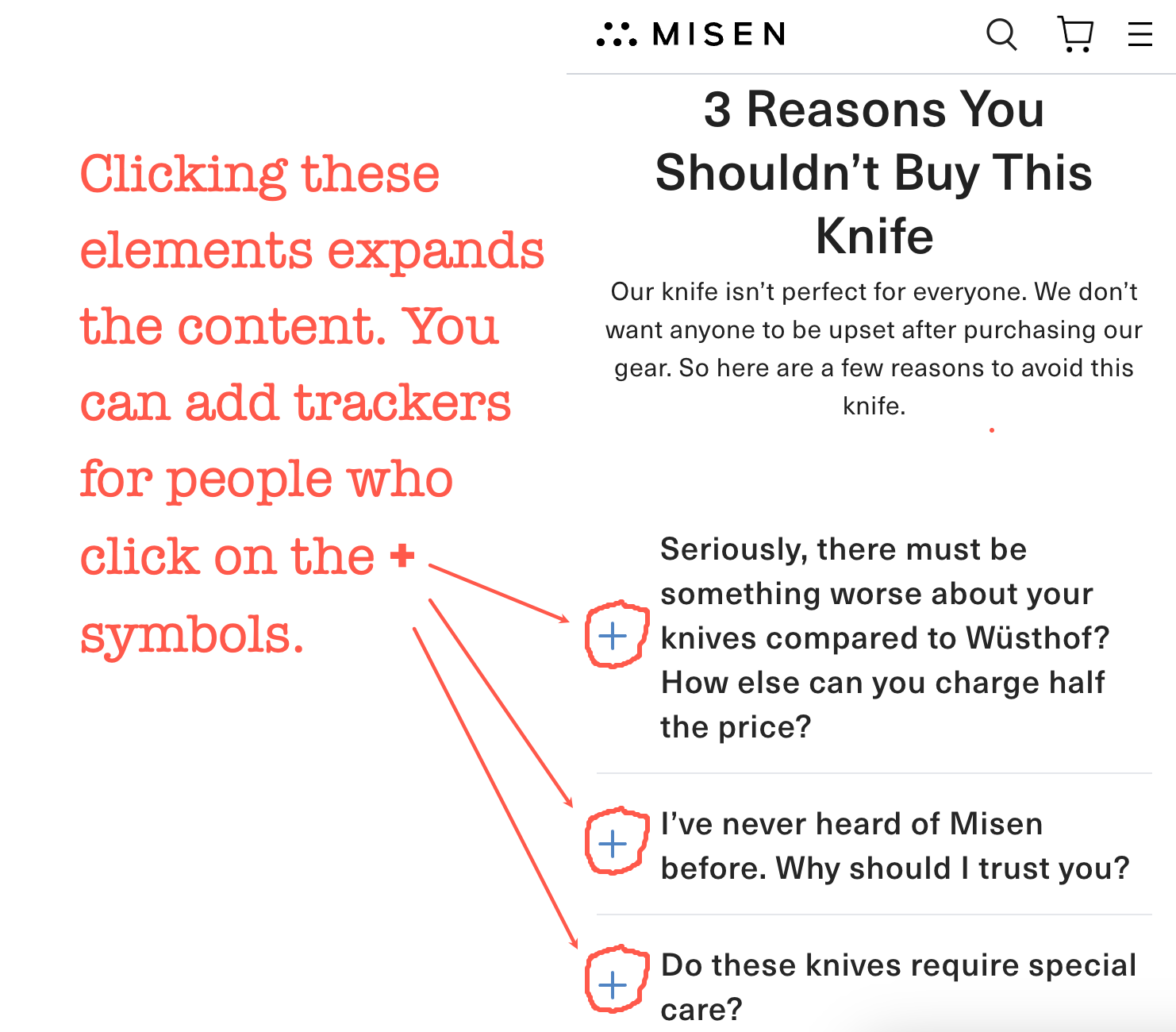
3: In the customer photo image gallery, you could add a tracker for people who clicked on an image, activated the image gallery lightbox, and scrolled through 3 images:
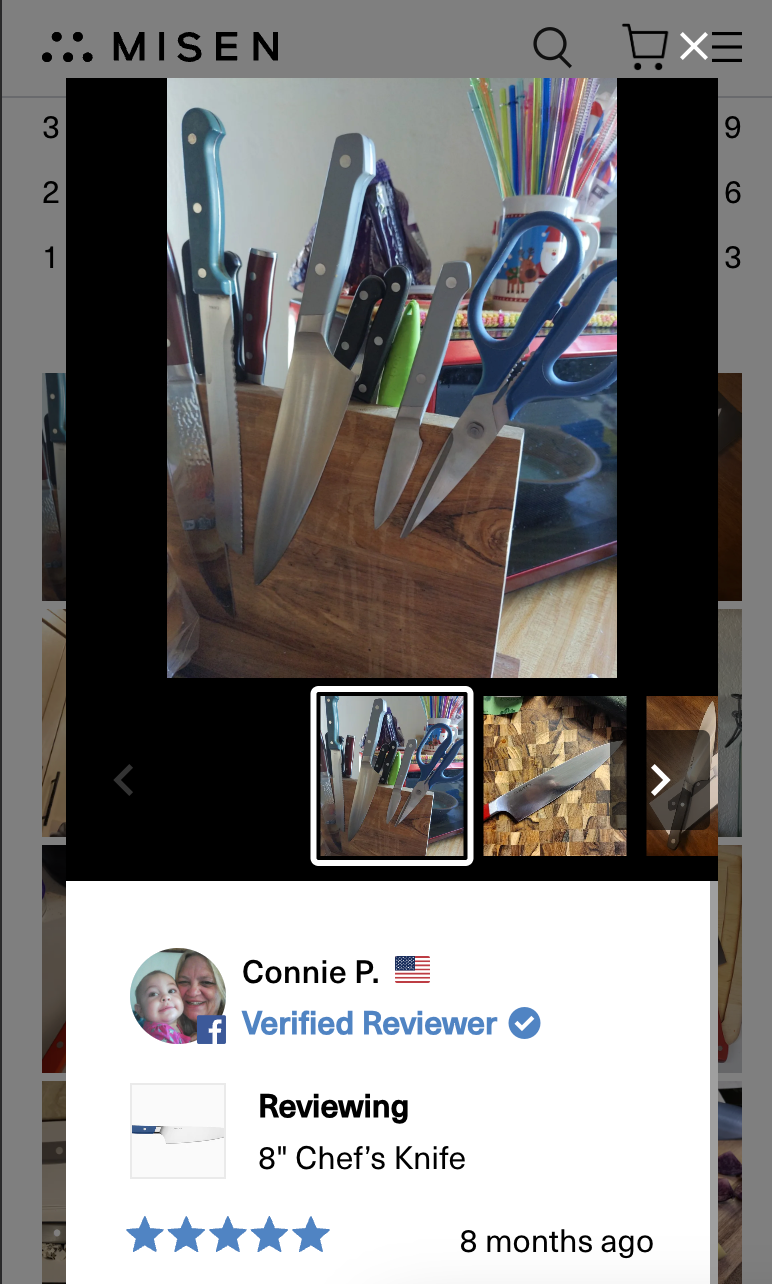
Now, when analyzing test data, you aren’t looking at overall revenue impact alone; you’re also reviewing engagement data of core elements.
If visitors don’t interact with them, then make tweaks to improve their discovery rate.
If content discovery is good but the revenue needle isn’t moving, then you know the sales pitch needs fine-tuning.
Revealing It All
We hope you liked this content discovery article. 98% of people don’t find this article, and 90% of those don’t come this far. And for that, you deserve our formula.
Experimenting 🧪 in our marketing lab for 16 years, we’ve discovered that online shoppers can be placed into one of three buckets:
— Ready to buy
— Will never buy
— Interested, but need a little more convincing
The 3rd group has the biggest revenue potential.
Evidence Our Formula Works
This strategy mentioned above isn’t a theoretical framework. It’s the base formula for all our conversion work for clients. This marketing framework can be used to boost sales for sports products. To sell skincare products. Pet products. Consumer electronics. Athletic gear. Back pain solutions. Food items. High-end cooking tools.
Does the sales pitch always need to be shown as a popup? Nope.
It can also convert cold Facebook ad traffic, improve mobile conversion rates, generate calls, optimize your most important landing page, etc.
It can even be used to improve your overall conversion rates.
Converting Interested, but Need a Little More Convincing Group (With Examples)
Building a sales pitch that converts visitors who are interested, but need a little more convincing is explained in this nine truths article.



